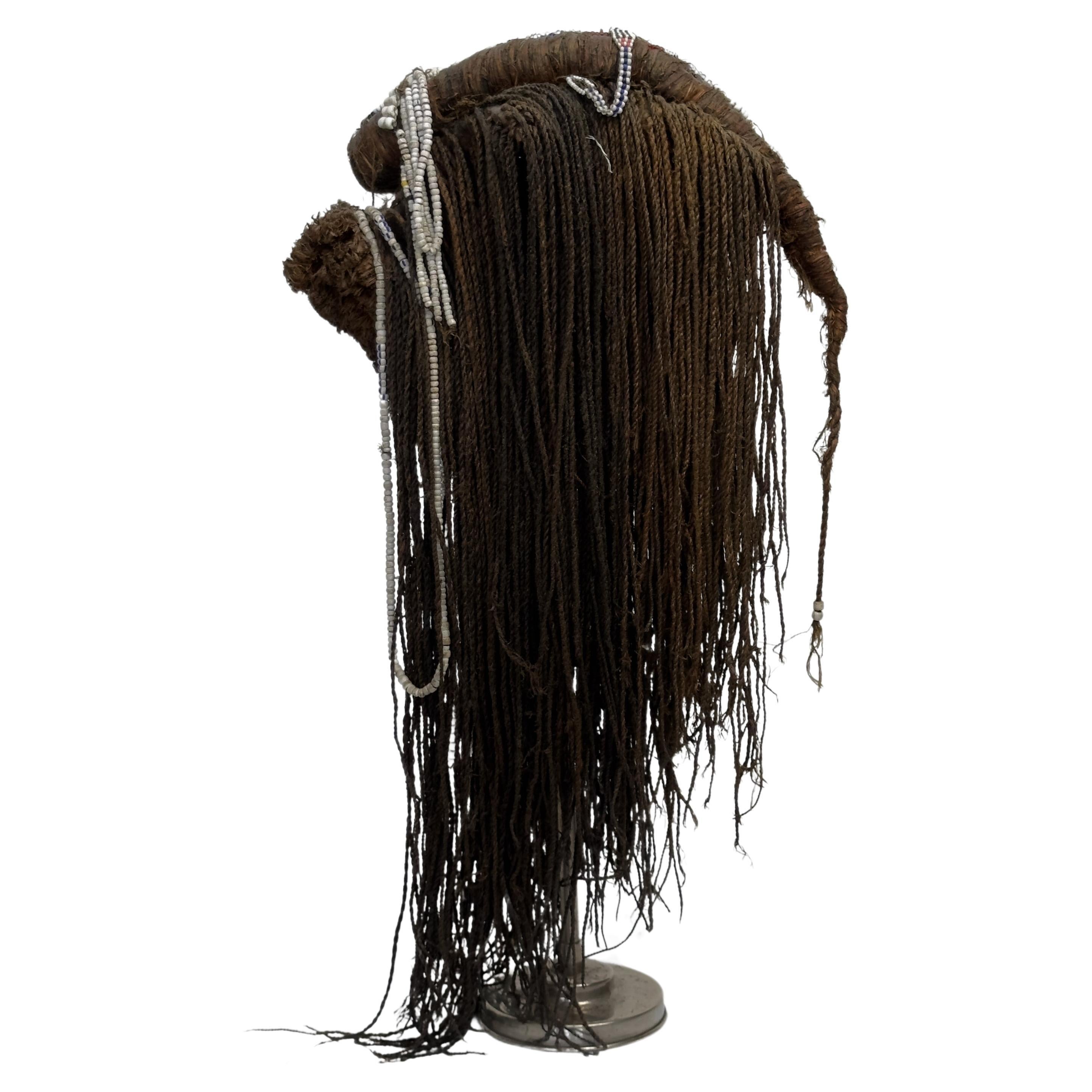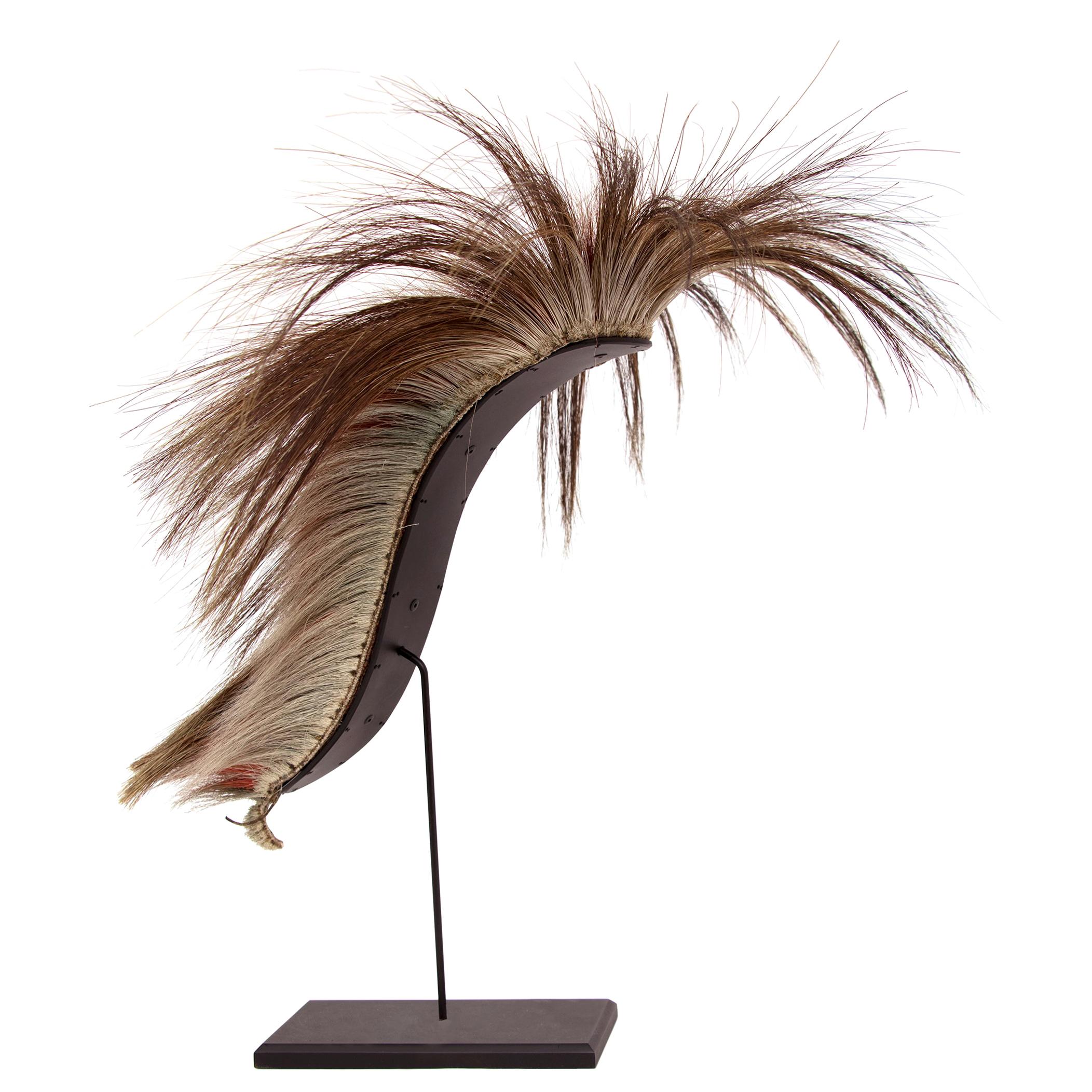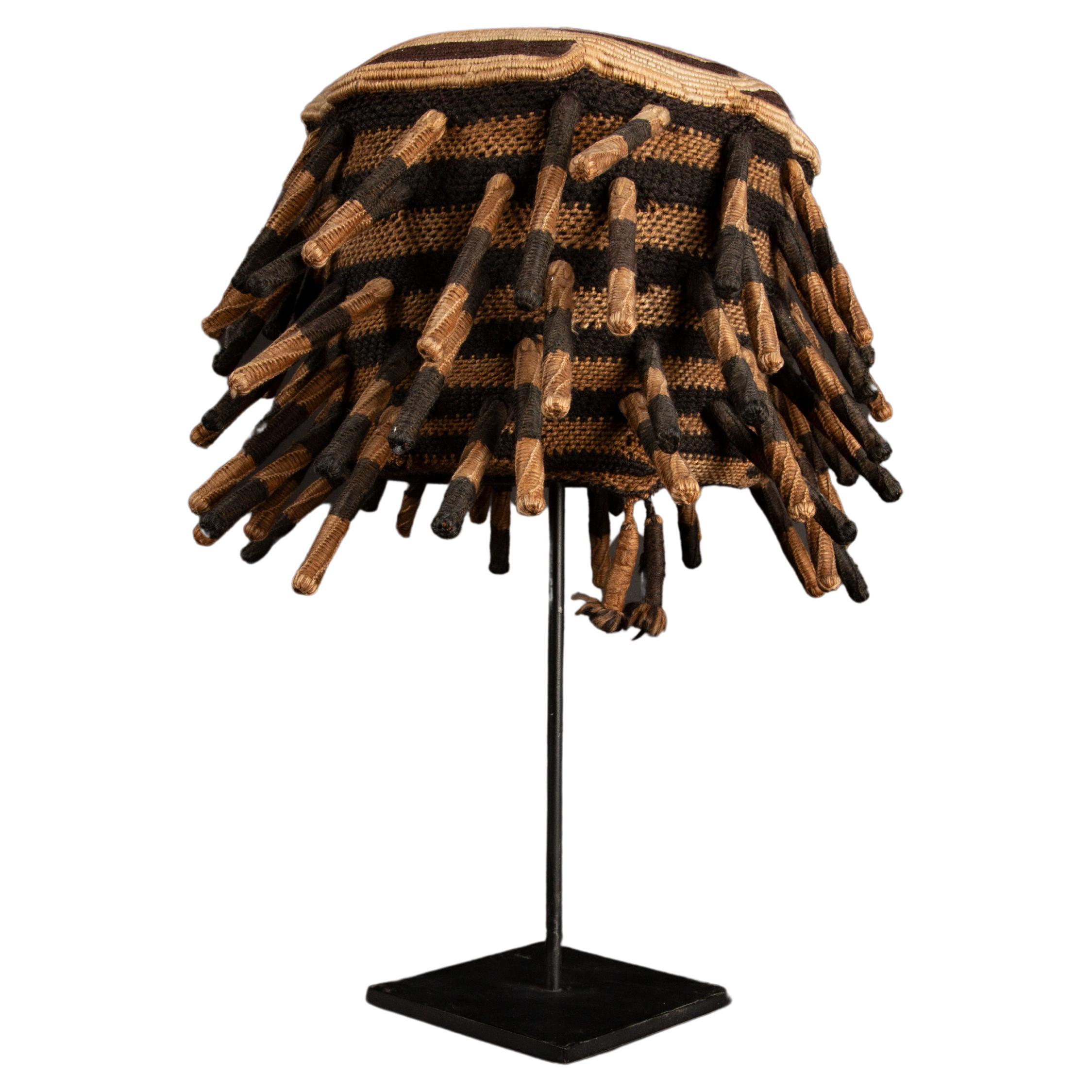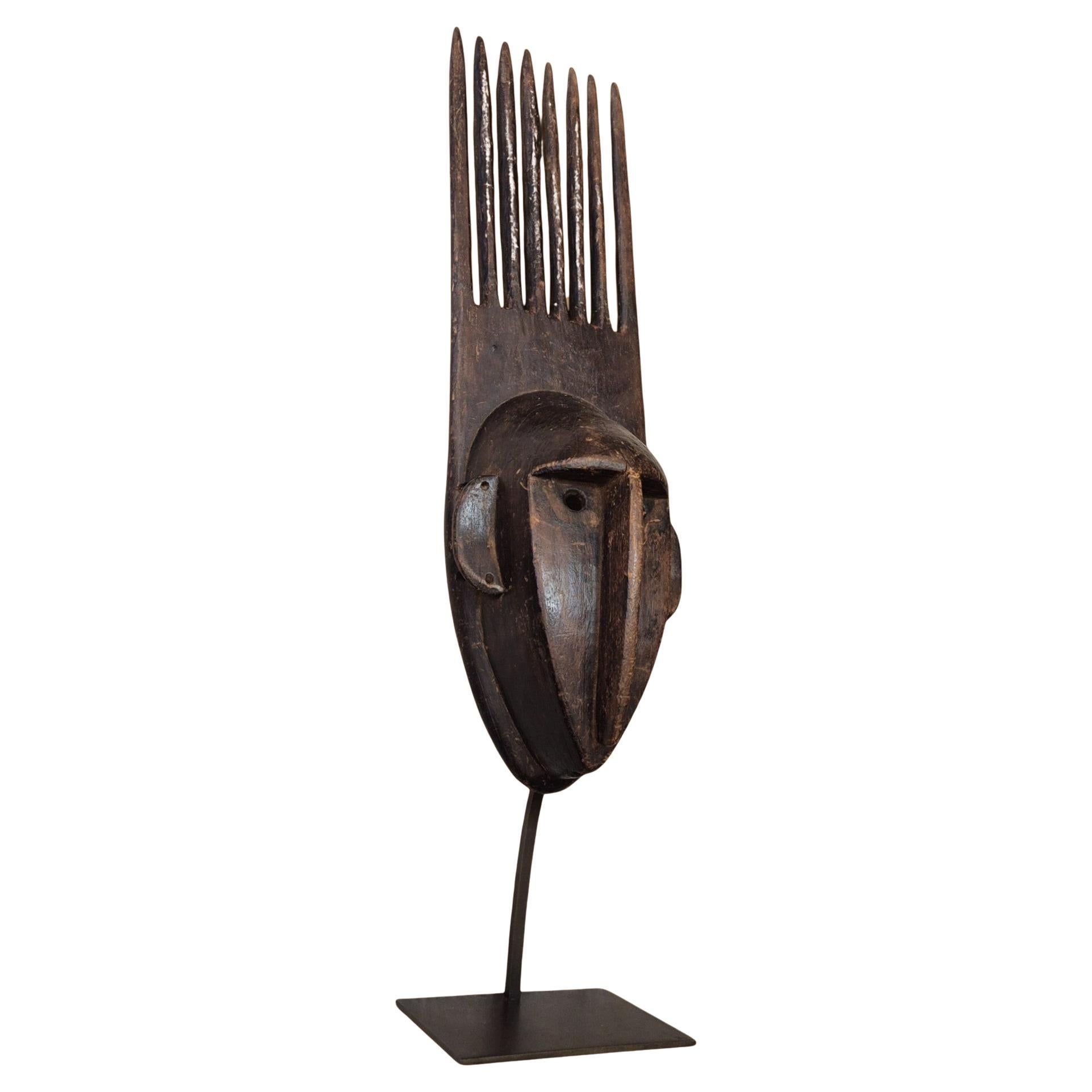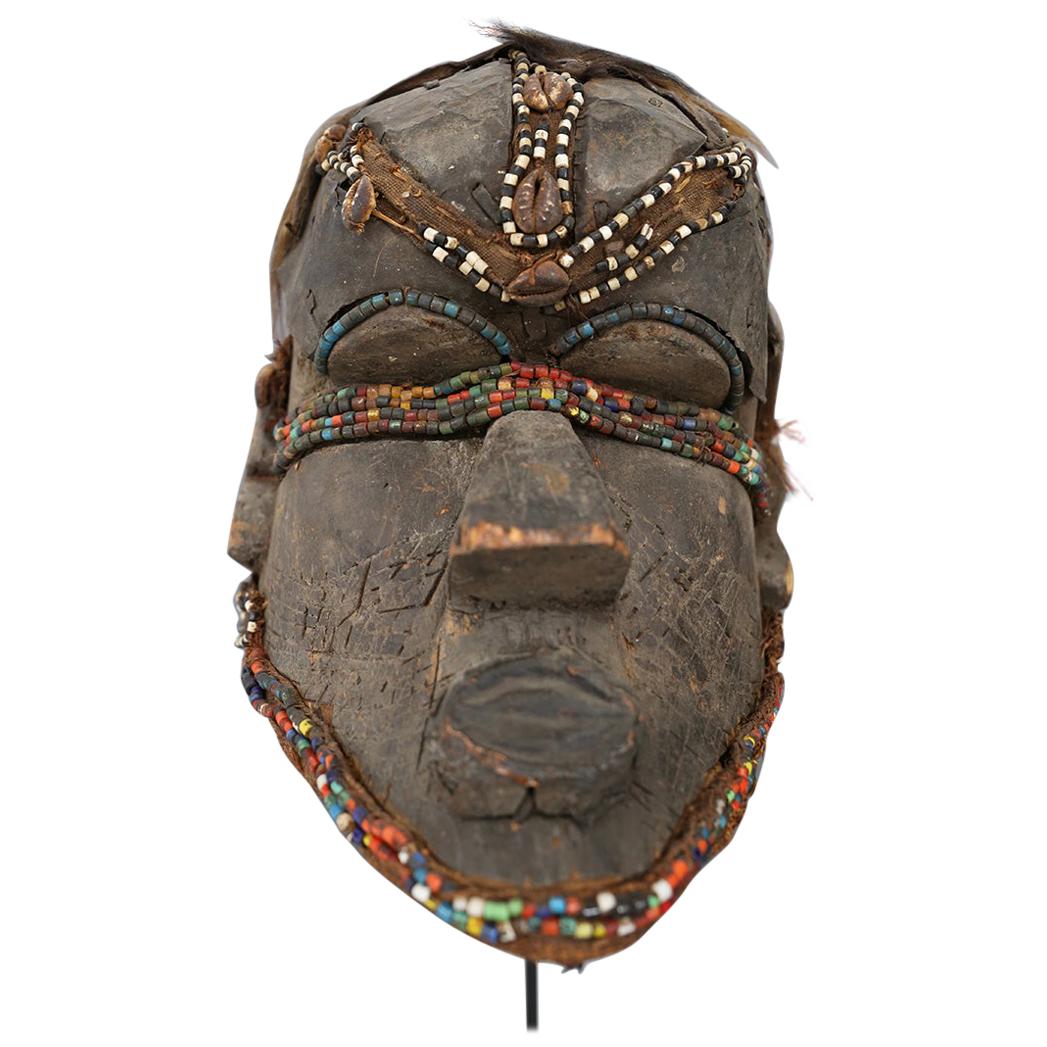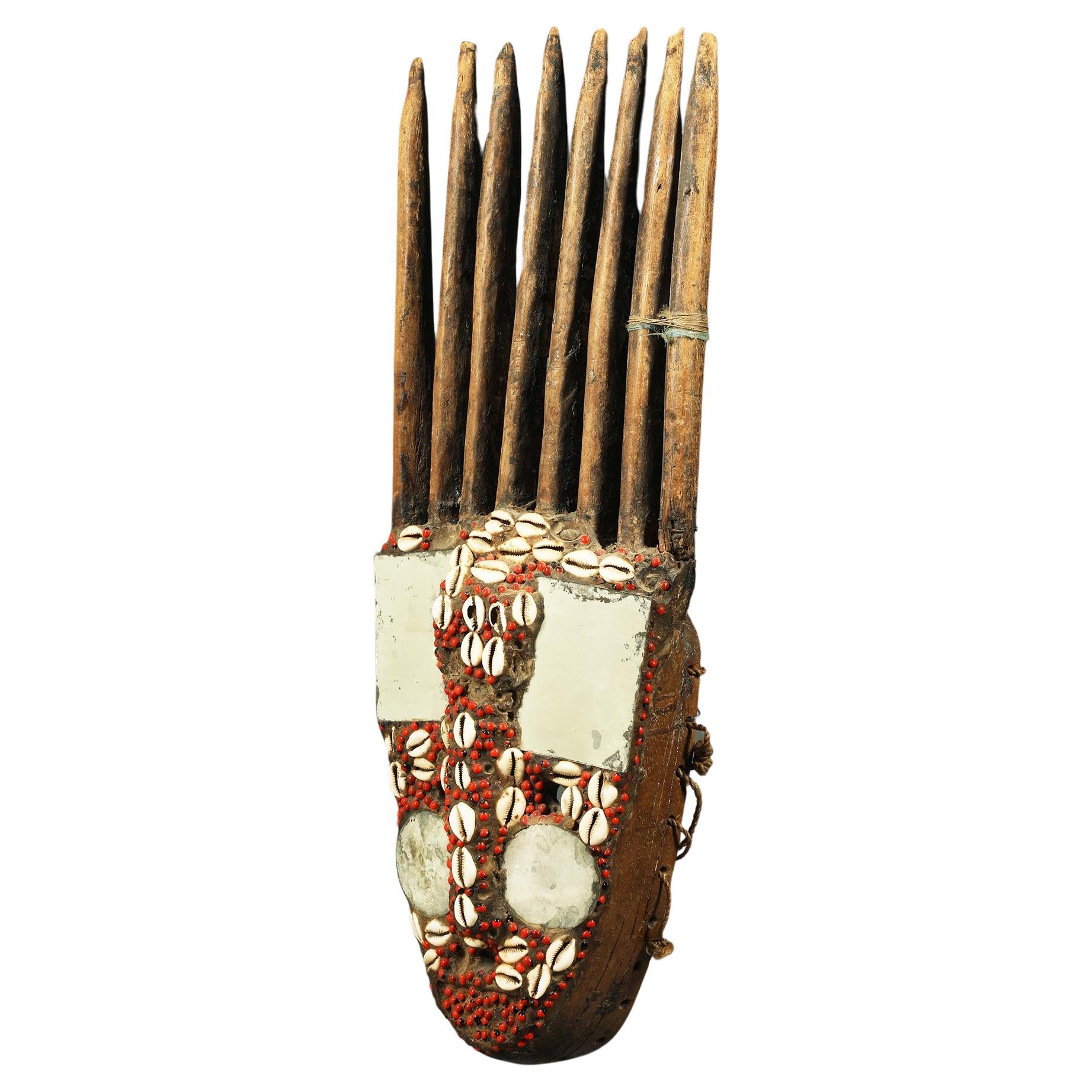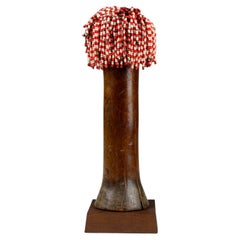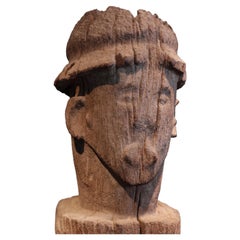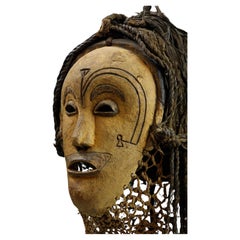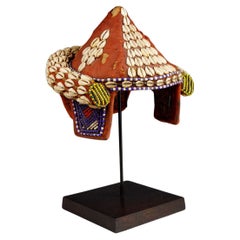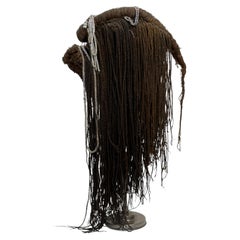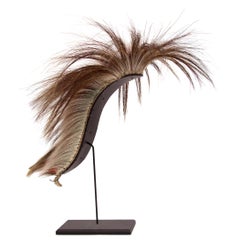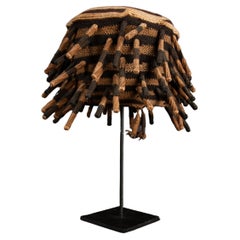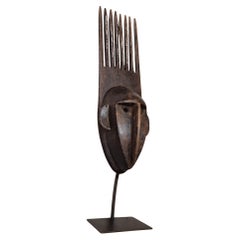Items Similar to 1960's Himba Head Adornment
Want more images or videos?
Request additional images or videos from the seller
1 of 9
1960's Himba Head Adornment
$2,014.14
£1,465
€1,723.40
CA$2,757.46
A$3,089.25
CHF 1,607.95
MX$37,621.11
NOK 20,483.14
SEK 19,289.34
DKK 12,864.94
Shipping
Retrieving quote...The 1stDibs Promise:
Authenticity Guarantee,
Money-Back Guarantee,
24-Hour Cancellation
About the Item
The Himba of Northern Namibia are immediately recognisable by their distinctive hairstyles, which are determined by their age, gender and marital status. Both Himba men and women wear various headdresses, of which each symbolises a specific position within the community, and specific phase in life. Girls of pre-puberty age wear a variety of plaits, while slightly older girls wear loose-hanging strands, which are tied backwards after the initiation ceremony, denoting marriageable age.
This head adornment replicates the sculptural form of an elaborate coiffure, including a centrally-located, sweeping plait and cascading strings of finely-woven fibre braids. A thick crest of cloth, encrusted with butter and red ochre pigment, crowns the forehead of the wearer, and intricate patterns of beadwork in red, blue, green, yellow and white adorn the back of the densely-woven plait. An ornament of red and green glass beads, which would have been worn below the chin of the wearer, features at the front of the head adornment.
The red complexion of Himba women's skin, as a result of applying otijze, a thick paste of butter, ochre and ashes, is considered a sign of beauty. The raffia fibre 'hair' of the headdress has been anointed with butter and red ochre pigment, resulting in an oily surface patina.
Throughout the African continent, hair is often treated like most sculptural forms - created as representational elements that are then embellished, treated, or empowered to achieve intended purposes.
Estimated Period: 1960's
Height Including Stand: 28.5 inches
Height Excluding Stand: 27.5 inches
Depth of Stand: 9 inches
Reference
Eds. Roy Sieber and Frank Herreman,'Hair in African Art and Culture' The Museum for African Art and PrestelPublishing (2000), p. 144
- Dimensions:Height: 28.5 in (72.39 cm)Width: 9 in (22.86 cm)Depth: 10.5 in (26.67 cm)
- Style:Tribal (Of the Period)
- Materials and Techniques:
- Place of Origin:
- Period:
- Date of Manufacture:1960's
- Condition:Wear consistent with age and use.
- Seller Location:London, GB
- Reference Number:1stDibs: LU8736237351272
About the Seller
No Reviews Yet
Vetted Professional Seller
Every seller passes strict standards for authenticity and reliability
1stDibs seller since 2023
7 sales on 1stDibs
- ShippingRetrieving quote...Shipping from: London, United Kingdom
- Return Policy
Authenticity Guarantee
In the unlikely event there’s an issue with an item’s authenticity, contact us within 1 year for a full refund. DetailsMoney-Back Guarantee
If your item is not as described, is damaged in transit, or does not arrive, contact us within 7 days for a full refund. Details24-Hour Cancellation
You have a 24-hour grace period in which to reconsider your purchase, with no questions asked.Vetted Professional Sellers
Our world-class sellers must adhere to strict standards for service and quality, maintaining the integrity of our listings.Price-Match Guarantee
If you find that a seller listed the same item for a lower price elsewhere, we’ll match it.Trusted Global Delivery
Our best-in-class carrier network provides specialized shipping options worldwide, including custom delivery.More From This Seller
View AllRare Form of Beaded Doll, Kenyan Coastal Region
Located in London, GB
This mid-twentieth century beaded doll, which likely originates from the Kenyan Coastal Region around Mombasa, exhibits a rare form with a wonderfully simp...
Category
Mid-20th Century Kenyan Tribal Tribal Art
Materials
Hardwood, Beads
Fine Early 20th Century Bongo Ancestral Post
Located in London, GB
This fine early twentieth-century ancestral post, from the Bongo culture in South Sudan, takes the form of a tall, multiple-ringed column. Carved from a hard wood, the post exhibits ...
Category
Early 20th Century South Sudanese Tribal Tribal Art
Materials
Wood
Fine Early 20th Century Chokwe Mask (Ex Afrika Museum Collection)
Located in London, GB
This early twentieth-century mask, from the Chokwe culture in Angola, displays unusual features. Carved from a light wood and decorated with yellow pigments, this fine mask exhibits ...
Category
Vintage 1940s Angolan Tribal Tribal Art
Materials
Wood
Kuba Woman's Prestige Hat (Mpaan)
Located in London, GB
In Kuba society, title holding is dominated by men; there are only two titles held by women. Headdresses were and are the most visible expression of o...
Category
Early 20th Century Congolese Tribal Tribal Art
Materials
Shell, Beads
Fine Konso Ancestral Figure, Ethiopia
Located in London, GB
This large figure, with a beautifully eroded surface, is a memorialisation in wood of a male Konso ancestor. Ancestral figures such as this (named 'waaka' or 'waaga') memorialise 'xh...
Category
Early 20th Century Ethiopian Tribal Tribal Art
Materials
Wood
1950's Lega 'Idimu' Mask, Democratic Republic of the Congo
Located in London, GB
This mid-twentieth century finely carved mask, from the Lega culture in the Democratic Republic of the Congo, displays the typically heart-shaped face of Lega 'Idimu' masks. Traces o...
Category
Vintage 1950s Congolese Tribal Tribal Art
Materials
Raffia, Hardwood
You May Also Like
A Mbukushu braided headdress
Located in Amsterdam, NL
Mbukushu / Kavango Group, Botswana/Namibia/Angola, Early 20th century
An exquisite and old example of a Mbukushu braided wig headdress, featuring a leather or hide base that has na...
Category
Early 20th Century Namibian Tribal Art
Materials
Leather, Shell, Natural Fiber
19th C. Plains Native American Roach Headdress, Deer & Porcupine Hair
By Native American Art
Located in Denver, CO
This exceptional 19th-century Plains Indian roach headdress is a rare and visually striking example of traditional Native American ceremonial regalia. ...
Category
Antique 19th Century American Native American Native American Objects
Materials
Fur
Prestige and Tradition: The Mounted Ashetu Hat of the Bamum and Bamileke People
Located in New York, NY
Adorned with spiked braids, this prestigious custom mounted Ashetu hat embodies the cultural significance of the Bamum and Bamileke people of Cameroon, Central Africa, who revered th...
Category
20th Century Cameroonian Tribal Mounted Objects
Materials
Metal
Bamana N'tomo mask, Mali, 20th century
Located in NICE, FR
Bamana N'tomo mask, Mali, 20th century
"Generally surmounted by three to eight horns forming a comb, the N'tomoface mask refers to a moment of compulsory education given to uncircumcised young boys in certain West African societies. The mask's discreet, even absent, mouth emphasizes the behavior expected of them in their future adult life after training: controlling and measuring their words, knowing how to keep quiet, preserving secrets and enduring pain in silence."
Excerpt from Masques du N'tomo, Marc Ladreit de Lacharrière Collection, Musée du Quai Branly Jacques Chirac, France.
The Bambara, or Bamana, live in central and southern Mali. Their name means “unbeliever” and was given to them by the Muslims. Animists, they believe in the existence of a creator god called Ngala, who maintains the order of the universe and coexists with another androgynous god called Faro, master of the Word, who gave all qualities to mankind and makes the fruits of the earth grow. Traditional Bamana art objects are closely linked to agrarian rites.
The Bamana dance these masks during initiation and circumcision ceremonies for young boys in the Ntomo society. The face, with its vertical outgrowths at the top, adopts geometric features beneath a rounded forehead, including an imposing busted nose, as the Bamana favor this organ in their statuary as it evokes sociability and clan cohesion. Indeed, during choreography, the dancer frequently touches the nose of the mask.
As teaching aids for candidates, masks from societies accessible to young boys and adults, such as the N'tomo, Korè and Ci wara...
Category
Vintage 1930s Malian Tribal Tribal Art
Materials
Wood
Kuba Mask African Bwoom Tribal Congo in Wood, Vibrates Vegetables, Animal Hair
Located in Milano, IT
The African Kuba Bwoom tribal mask is the oldest known mask, the Kuba bwoom mask. The materials used for the realization of the Mask are: Wood, colors and vibrates plants, caures, beads, animal hair. In dance it expresses exuberance and joy. The style is similar to that of the middle Kasai. This mask is a helmet with animal hair, carved with a very wide forehead and hollow cheeks that are announced by motifs or dashes and beads. The mouth of the mask is very pronounced carved in wood and then applied on the mask. To distinguish the forehead in different areas are used black and white beads to draw attention to other aspects of the face such as the nose and chin. The entire edge of the chin is surrounded by beads of various colors. The person wearing the mask cannot look because there are no holes for the eyes present; the mask must create the feeling of being blind. Some masks similar to the bwoom mask include the funny mask, the ram mask and initiation masks such as Nnup.
The real Kuba masks...
Category
Antique 1620s Congolese Tribal Tribal Art
Materials
Animal Skin, Organic Material, Wood
$2,860 Sale Price
20% Off
Magical Barbara Antelope Mask Mirrors Seeds Cowries Mali, Africa ex Willis
Located in Point Richmond, CA
Early carved wood antelope mask, with many vertical horns, applied glass mirrors, cowries and seeds. Old native repair to one horn.
It is in good con...
Category
Mid-20th Century Malian Tribal Tribal Art
Materials
Wood
$2,360 Sale Price
20% Off
More Ways To Browse
Vintage Blue Glass Head
Vintage Hanging Beads
Vintage Blue Glass Ornaments
Beaded Headdress
Oilily Vintage
African Beaded Head
African Beaded Crown
African Carved Doors
Tribal Headrest
Antique Anklet
Congo Currency
New Guinea Figure
Adze Used
Mali Bambara
West African Mask
African Iron Currency
Beaded African Figure
Dogon Mali
